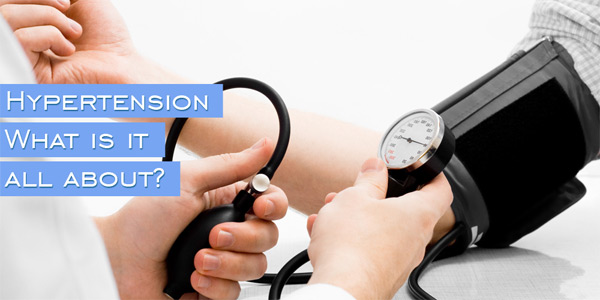What is Hypertension?
Blood pressure is the force of your blood against the blood vessel walls. Having high blood pressure also called as Hypertension means that this force is higher than it should be. Hypertension is a serious disease that can, over time, damage the blood vessel walls and increase a person’s risk of heart attack, stroke and other conditions.
In Hypertension the arterial blood pressure raises to high level from the normal level (120/80 mmHg). In the medical world it is called as a silent killer as it does not show any clear symptoms. It is divided in two types (primary or essential hypertension and secondary hypertension) on the basis of its causing factors.
The primary hypertension is more common type however its causes are unknown. Whereas, causes of secondary hypertension are kidney damage, adrenal gland over-activity, sleep apnea syndrome, tumours, recreational drugs, thyroid gland dysfunctioning, pregnancy-related conditions, over or wrong medications, alcoholic drinks, bad food and etc.
Causes
Most of the time, doctors cannot find a specific cause of hypertension. Certain factors increase the risk of developing hypertension, including obesity, excess alcohol consumption, excess salt intake, smoking and having diabetes. Aging also increases the risk of hypertension because blood vessels become stiffer with age.
Being under stress can also increase your blood pressure temporarily. Certain medical conditions and medications can also raise blood pressure, and this is known as secondary hypertension.
Symptoms
People with high blood pressure usually have no symptoms, and so patients can have the condition for years without knowing it. However, severe hypertension show some symptoms of headaches, sleepiness, palpitation, blurred vision, fatigue, dizziness, confusion, ringing sensation in the ears, breathing difficulty, irregular heartbeat which may lead to even coma.
Although many patients may not have symptoms at first, over time, high blood pressure can lead to “wear and tear” on the body. For example, high blood pressure can stretch and damage blood vessels, which in turn, can increase the risk of health problems.
Diagnosis
High blood pressure is diagnosed from a blood pressure test. Typically, doctors place a blood pressure cuff on the arm, which has a gauge that measures pressure in the blood vessels. As a person’s blood pressure can vary depending on a number of factors, including the time of day, a doctor will usually check blood pressure several times and different appointments before diagnosing someone with high blood pressure.
Treatment & medication
The goal of the treatment is for patients to keep their blood pressure in the normal range — below 140/90 mmHg. For patients who have diabetes or chronic kidney disease, doctors recommend that they keep their blood pressure under 130/80 mmHg.
Lifestyle changes that can help lower blood pressure include eating a healthy diet — such as a diet that cuts down on salt, and boosts fruit and vegetable intake — increasing physical activity, reducing weight, and quitting smoking. In addition, stress relief practices, such as meditation or other relaxation techniques, can also be helpful in lowering blood pressure.
The number of people living with hypertension is predicted to be 1.56 billion worldwide by the year 2025. The increasing prevalence of the condition is blamed on lifestyle and dietary factors, such as physical inactivity, alcohol and tobacco use, and a diet high in sodium usually from processed foods. World Hypertension Day is celebrated every year on 17th of May to raise the public awareness about the hypertension, its preventive measures and complications.
Get yourself checked today for any Blood pressure related concerns at https://www.kokilabenhospital.com


